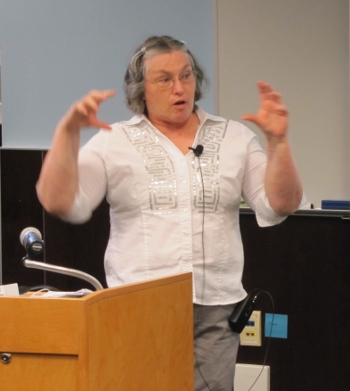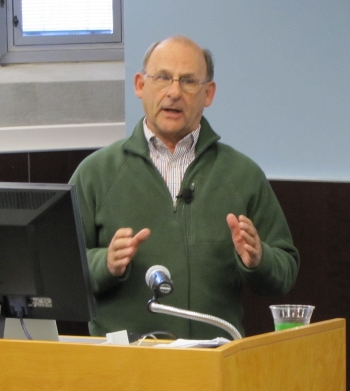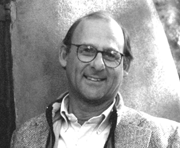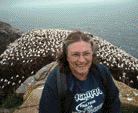NIMBioS Seminar Series
In conjunction with the interdisciplinary activities of the National Institute for Mathematical and Biological Synthesis (NIMBioS), a seminar series on topics in mathematical biology will be hosted at NIMBioS every other Tuesday at 3:30 p.m. (unless otherwise noted) in the Hallam Auditorium, Room 206, Claxton Building, 1122 Volunteer Blvd. Seminar speakers will focus on their research initiatives at the interface of mathematics and many areas of the life sciences. Light refreshments will be served in the 1st floor visitor breakroom beginning 30 minutes before each talk. Faculty and students from across the UT community are welcome to join us.
Time/Date: Tuesday, April 9, 2013, 3:30 p.m.*
Location:
Room 206, Claxton Building, 1122 Volunteer Blvd.
Speakers:
Dr. Lisa Sattenspiel, Anthropology, Univ. of Missouri, Columbia, and
Dr. Alan Swedlund, Anthropology, Univ. of Massachusetts
Topic:
Modeling the demography of a pre-Columbian Southwest US population: The Artificial Long House Valley (ALHV) project
Abstract:
Population settlement, growth, expansion and eventual abandonment of ancestral Pueblo sites in the Four Corners region of the United States have posed enduring questions for bioarchaeologists and paleodemographers. An agent-based computer model, the Artificial Anasazi (AA) model, was developed to aid in understanding this population history. The model uses extensive archaeological and environmental data to simulate the rise and fall of populations in the Long House Valley, located in northeastern Arizona. It focuses on demographic changes at the household level, however, which prohibits it from incorporating individual-level demographic processes, such as age-specific fertility and mortality. These processes have been built into an extension of the model, which we call the Artificial Long House Valley (ALHV) model. Simulation outcomes from the ALHV model are very different from those of the AA model. In this talk we describe the structure of the two models, show how the results differ, and suggest reasons for these differences. We hope to generate discussion that will aid in determining how best to further incorporate individual-level demographic processes into the ALHV model to improve our efforts at measuring the impact of infectious disease, changes in fertility, and other individual-level factors on the collapse of the population and abandonment of the Long House Valley.
*Join us for refreshments at 3 p.m. in the 1st floor visitor breakroom.
Seminar Flyer (pdf)
For more information about this and other NIMBioS Seminars, visit /seminars.


NIMBioS
1122 Volunteer Blvd., Suite 106
University of Tennessee
Knoxville,
TN 37996-3410
PH: (865) 974-9334
FAX: (865) 974-9461
Contact NIMBioS




